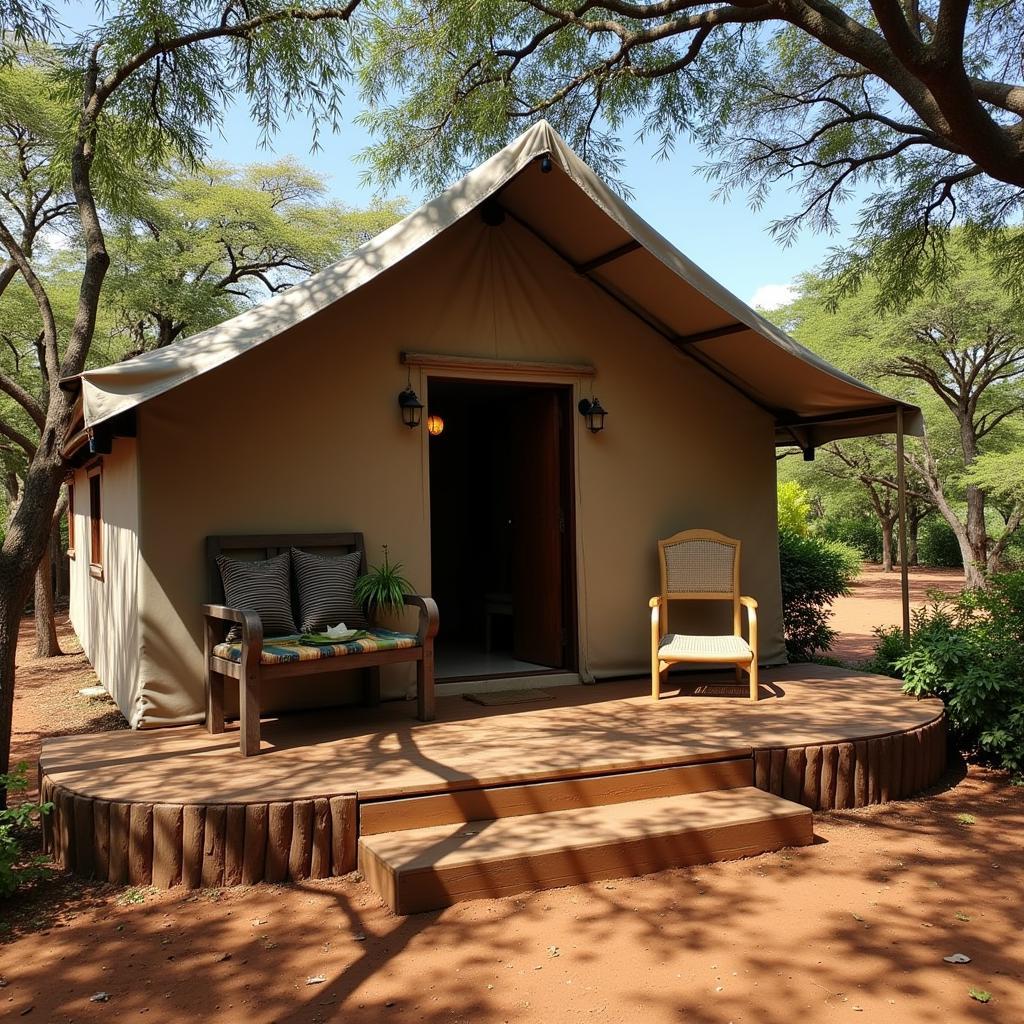De Brazza’s Monkey: An Enigmatic Primate of Central Africa
The De Brazza’s monkey, a captivating and elusive primate, inhabits the swampy forests and riverine areas of Central Africa. This Old World monkey species, known scientifically as Cercopithecus neglectus, stands out with its distinctive orange diadem and white beard, earning it the nickname “the monk.” Let’s delve deeper into the fascinating life of this unique creature.
The Distinctive Features of the De Brazza’s Monkey
De Brazza’s monkeys are easily recognizable thanks to their striking appearance. The most prominent feature is the orange crescent-shaped patch of fur on their forehead, resembling a crown or diadem. A white beard, which is more pronounced in males, further adds to their regal look. Their greyish-green fur provides excellent camouflage in their densely forested habitat. These medium-sized monkeys typically measure between 40 and 60 centimeters in body length, with a tail almost as long as their body.
What makes the De Brazza’s monkey even more interesting is its semi-terrestrial lifestyle. Unlike many arboreal monkey species, they spend a significant amount of time on the ground, foraging for food amongst the undergrowth. They are excellent swimmers and readily take to the water when threatened. Their diet consists primarily of fruits, leaves, seeds, and insects.
Habitat and Conservation Status of De Brazza’s Monkeys
De Brazza’s monkeys are found in a relatively restricted range across Central Africa, including countries like Cameroon, Congo, Gabon, and Angola. They prefer swampy forests, riverine forests, and gallery forests, often near bodies of water. They are highly adaptable and can tolerate a degree of habitat disturbance, however, ongoing deforestation and hunting for bushmeat pose significant threats to their populations.
The International Union for Conservation of Nature (IUCN) lists the De Brazza’s monkey as “Least Concern,” but their numbers are declining in certain areas due to human activities. Conservation efforts are crucial to ensure the long-term survival of this unique primate.
Social Structure and Behavior of the De Brazza’s Monkey
De Brazza’s monkeys typically live in small groups of one male, several females, and their offspring. These groups are highly territorial and defend their home range from other groups. They communicate using a variety of vocalizations, including alarm calls and contact calls. Their social interactions are complex, involving grooming, play, and displays of dominance and submission.
Understanding the De Brazza’s Monkey: FAQs
What is the average lifespan of a De Brazza’s monkey? In the wild, they can live up to 22 years.
Are De Brazza’s monkeys endangered? While currently listed as Least Concern, their populations are facing increasing pressure due to habitat loss and hunting.
What is the De Brazza’s monkey’s scientific name? Cercopithecus neglectus.
What do De Brazza’s monkeys eat? Their diet consists primarily of fruits, leaves, seeds, and insects.
Where do De Brazza’s monkeys live? They inhabit swampy and riverine forests of Central Africa.
Why are they called De Brazza’s monkeys? They are named after Pierre Savorgnan de Brazza, a French explorer who first described the species.
How do De Brazza’s monkeys communicate? They use a variety of vocalizations, including alarm calls and contact calls.
Conclusion
The De Brazza’s monkey, with its unique appearance and intriguing behavior, represents a vital part of the African african monkey. Understanding and protecting this species is essential for preserving the biodiversity of Central Africa. Further research and conservation initiatives are crucial to ensure that future generations can continue to marvel at the enigmatic De Brazza’s monkey.
Dr. Evelyn Ndidi, a primatologist specializing in African monkey species, notes, “The De Brazza’s monkey plays a crucial role in seed dispersal, contributing to the health and regeneration of their forest habitat.”
Professor Joseph Abimbola, a conservation biologist with extensive experience in Central Africa, adds, “Protecting the De Brazza’s monkey requires a multi-faceted approach, addressing both habitat loss and the illegal bushmeat trade.”
Dr. Anika Kito, a wildlife veterinarian specializing in primate health, emphasizes, “Understanding the specific health challenges faced by De Brazza’s monkeys is crucial for effective conservation management.”
Other questions you may have could be related to the specific conservation programs in place for De Brazza’s monkeys, the impact of climate change on their habitat, and the details of their reproductive behavior. You may find more information on related topics on our website.
When you need support, please contact Phone Number: +255768904061, Email: kaka.mag@gmail.com or visit us at Mbarali DC Mawindi, Kangaga, Tanzania. We have a 24/7 customer service team.
